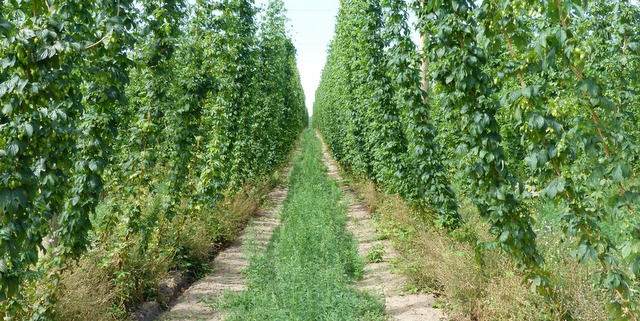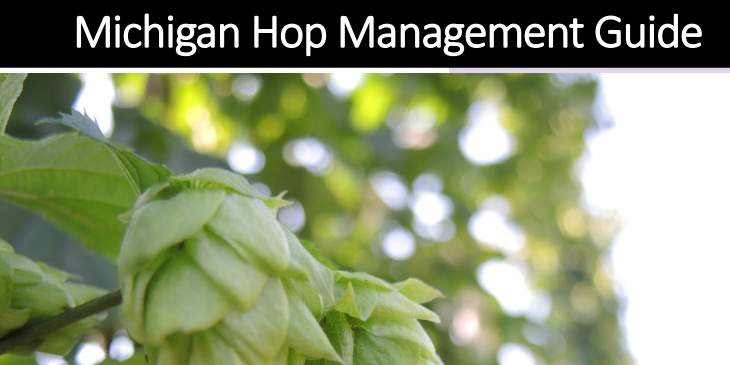
Michigan actually used to be a lupulin Shangri-La. Way back in the mid-1800s, hops and cherries were the state’s biggest crops, but the local industry would fade away for a variety of factors (downy mildew, pesky insects called hop louse and drought, for starters). But today, Michigan is once again becoming a hop hub, growing both large and small farms, building tall, elaborate trellis systems and resurrecting a local beer ingredient for the Wolverine State’s thriving craft beer industry and beyond. The 45th parallel which goes through Michigan is a sweet spot for growing hops similar to Oregon and Idaho.
In February, the Hop Growers of America released its 2017 data pack, which revealed that Michigan hop acreage had expanded by 153 percent from 2015 to 2017 — from 325 acres to 810 acres. This week the The Detroit News pulled together a nice piece on the expectations for Michigan’s hop industry. From the article:
Michigan growers expect that acreage to stabilize in the “750-800 acre range for the next few years as some varieties of hops have ample inventories and will be idled or removed,” according to Ann E. George, executive director of the Hop Growers of America, a trade association.
The slowdown/stabilization corresponds with an overall saturation in the hop market, but demand for quality local hops can still find regionalized niches for more growth. A couple of years ago, we sat down with MI Local Hops, one of the biggest farms fueling Michigan’s hop growing rebirth. The 220-acre hop farm in Williamsburg, Mich., is just outside of Traverse City, and its rolling fields and quality products are attracting plenty of commercial craft brewers. Starting a hop farmer is a serious multi-year labor of love (it takes two or three years just to get your first harvest). To get such an operation off the ground, we suggest you read our MI Local Hops profile over here.
If you’re geekin’ for even more Michigan hop knowledge, we might also suggest the Michigan Hop Management Guide, 2018. Michigan State University updated its hop management guide available to Michigan hop growers back in March. The packet now includes an updated list of registered pesticides, nutrient management recommendations and a guide to seasonal pest occurrence in Michigan. It’s really the best 20 pages on Michigan hops you’ll find for free.






Leave a Reply
You must be logged in to post a comment.